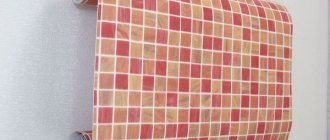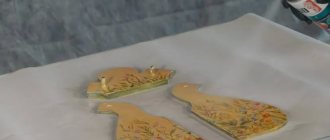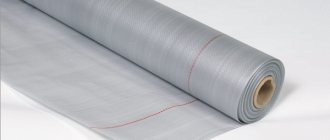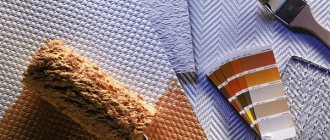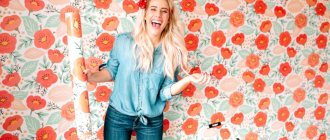To create sun protection on windows, the easiest way is to use tinting film; unlike curtains, it makes it possible to see everything that is happening on the street, while drowning out the sunlight. You can do the gluing yourself. But in order to get an even coating without flaws, you should know the rules of work. Details on how to apply tint to a window will be discussed below.
When is window tinting necessary?
Most often, film tinting is found on car windows; this is done in order not only to reduce the brightness of sunlight, but also to hide it from others and reduce the heating of the interior. Proper gluing of solar control film on windows in the house will also lead to this effect. Tinting materials have different degrees of darkness. In bedrooms and living rooms you can create more darkness than in the kitchen or office.
Before you stick the tint film on the window, you should figure out when it is recommended to do it:
- If the windows in the room are located on the south side, where the sun shines longer;
- The climate is characterized by a large number of sunny days;
- If it is necessary to create a sufficiently darkened space, for example, for sick and elderly people.
In bedrooms and living rooms you can create more darkness than in the kitchen or office.
Step-by-step instructions: how to stick it correctly?
Properly installed film lasts as long as possible and looks flawless. It is best to use the services of qualified installers with special tools and professional skills.
If you decide to do it yourself, use the step-by-step instructions for gluing sun protection film.
Preparation
Before starting work, it is necessary to carry out preparatory work in the room where installation is planned. It must be dry and clean with a relative air humidity of 20 to 80%.
The film is installed at a temperature not lower than +10 and not higher than +30 degrees.
Uncover
At the first stage, the material is cut on a perfectly flat surface. In this case, the sides of the sheet must correspond to the dimensions of the glass with an allowance of 10 mm for cutting. When installing the film on a double-glazed window installed in a window structure, this allowance is 15 mm. When tinting several glasses of different sizes at the same time, it is recommended to number the cut pieces of film to avoid errors during installation.
Glass cleaning
The service life of a sun protection coating depends on the condition of the surface to which it is applied.
- Before gluing the film to the glass, you should clean it of adhering particles of dust and dirt. This is done using a scraper with a metal blade.
- The cleaned surface is covered with a soap solution of shampoo and water (3-4 drops per 0.5 liters of water) using a spray bottle and rubbed with a sponge.
- The edges of the glass are wiped with a paper napkin.
- Apply the soap solution again and clean the glass with a rubber wiper in both the horizontal and vertical directions. After each pass, the instrument is washed with clean water.
Installation
After all the preparatory work has been completed, installation begins in the following sequence:
- Spray the solution onto the desired piece of film and work surface.
- Delaminate the film, starting from the corner. The gradually opening adhesive base continues to be moistened with the solution. Apply the film to the glass, starting from the top edge, with the side on which the glue is applied.
- Carefully remove any remaining liquid by distillation, moving from the center to the edges.
- Using a cutting knife, cut the edges of the film at an angle of 15–20 degrees. In this case, the distance from the edges of the film to the boundaries of the glass should be from 3 to 5 mm. This gap will be larger the thicker the film itself.
- Roll the edges of the sheet using forcing and press them using napkins.
Drying glass
The laminated glass is left to dry for a day, positioned so that there is space between them for ventilation. After this, they are inspected and possible defects are corrected.
Care
Reflective surfaces require special care. When cleaning laminated glass, adhere to the following rules:
- Cleaning is done using a rubber spatula, soft towel or paper napkins.
- As a detergent, use a solution for manual dishwashing or neutral shampoo (at the rate of 30 g per 1 liter).
- The water must be clean and free of solid elements (such as sand).
- After washing, wipe the glass with a soft cloth or rubber wiper.
Windows covered with sun-protective material are not washed for a month after gluing, so as not to cause the material to shift and wrinkles to appear on it.
Principles of protecting windows from the sun
To reduce the impact of the sun, both light and heating, they decide to tint the windows. But there are several options for obtaining this effect:
- Using mirror protection – a reflective effect is obtained, the degree of reflection can be different;
- Infrared protection, in this case an athermal film coating is used, which only removes the heating effect without reducing the light illumination in the room;
- Ultraviolet protection, here the opposite effect with the previous option, objects can heat up and the light level decreases, the degree of light reduction can also be selected based on the preferences of the owners.
Thus, the last two types are selected based on climatic conditions. If the region is often hot, then it is better to use the second type, if the third is cold. The first type is selected if you want to reduce both light and heating.
To reduce the impact of the sun, both light and heating, they decide to tint the windows.
Mirror sun protection film.
It is used as universal protection against ultraviolet rays or the glances of random passers-by. When choosing a mirror film, you must remember that during the day the mirror effect of the tint film is much higher than in the evening. During the day, it is almost impossible to see anything outside the house, but in the evening, when it gets dark, and the lights are on in your house, you can be seen. When choosing a sun protection film, you can also kill two birds with one stone if you choose a thicker film. It will give your glass more strength and even after a strong blow the glass will most likely remain intact. This property can be used to protect a child's room. By placing a durable film in a child’s room, you can be sure that while playing, children will not break the glass, and it will not crumble into pieces, which means the children will not be harmed.
Also, those who like to grow flowers on windows will not need to rearrange the plants to protect them from direct sunlight.
Types of films for window glass
You can apply tinting film to windows in different rooms. On balconies, cars, corridors, etc. There are many different film materials on sale; there are 4 main types: protective, sun-protective, mirror matte. The features of each will be discussed below.
You can apply tinting film to windows in different rooms.
Sun protection
This type is used to prevent objects from heating up from the sun. The degree of effect reduction can reach 80%. The film also helps to remove glare without affecting the lighting in the room. They get beautiful glass designs that stand out in an unusual color.
This type is used to prevent objects from heating up from the sun.
Mirror
The mirror type is similar to tinting, but during the day it helps to hide what is happening on the inside of the apartment from passers-by. But in the evening when the lights are turned on, the effect disappears. The reduction in light penetration is insignificant.
The reduction in light penetration is insignificant.
Protective
This type helps to increase the strength of the glass unit; there are subtypes that help contain glass fragments if it is hit hard. Others increase strength; glass can withstand stronger mechanical loads. They also reduce the heating effect.
This type helps to increase the strength of the glass unit.
Matte
The condition when you can apply a matte film is that there is no need to look through the glass. After all, they make glass opaque. Therefore, a matte look is used for door panels and windows between other rooms.
The condition when you can apply a matte film is that there is no need to look through the glass.
Protective films
There are different types of protective films available in stores, the functionality of which can vary within serious limits. With their help, the premises are protected from unauthorized access.
Film materials can have the following types of protective characteristics:
- From weapons. If a shot is fired from a pneumatic gun or a traumatic pistol, the film material can easily withstand such mechanical impact. Unfortunately, no film can protect against a metal bullet, but it can slow it down.
- From burglary. The home or office is protected from unauthorized entry - the glass will be difficult to break, because the film material, if glued correctly, will be extremely difficult to damage. It will be able to withstand prolonged impacts. The level of resistance, depending on the manufacturer of the product, will vary from 30 to 190 kg/cm2.
- From listening. Specialized models that significantly reduce the vibration of passing sound waves. If there is a conversation going on inside the room, it will not be possible to record it from outside.
- From fragments. High-strength film materials that trap flying fragments and penetrating into windows.
- From childhood exposure. The presence of this film material will allow you not to worry about the child being able to break the window and fall out of it, or be injured by fragments.
- From heat loss. Models of this type are necessary to reflect ultraviolet and infrared radiation, so their use allows you to retain heat in the cold season, and provide coolness in the summer months. The light transmittance of such models is about 90%.
- From the fire. If a fire develops on the street, then the fire is guaranteed to not be able to pass through such film material (relevant for private country houses).
Protection classes
All types of protective films can be classified according to their protection classes, which are determined by the thickness of the product:
- A1 (thickness up to 0.24 mm), withstands mechanical stress of 3.5 J.
- A2 (thickness up to 0.412 mm), withstands mechanical stress of 6.5 J.
- A3 (thickness up to 0.6 mm), withstands mechanical stress of 9.5 J.
The use of protective film is a rational and correct decision if there is a possibility of dangerous situations for the home or the people living in it. Such products are inexpensive, but can provide high-quality protection against burglary, unauthorized entry, exposure to fire, and heat loss.
How to apply solar control film to a plastic window (2 videos)
We glue the sun protection film (20 photos)
Advantages and disadvantages
Before deciding whether or not to glue film to the window glass, you should study the advantages and disadvantages of tinting. The advantages include:
- Can be used for all types of glass;
- Reducing the penetration of ultraviolet radiation to one percent;
- Getting rid of glare;
- Reducing heating of objects from the sun;
- Creating a layer that will prevent people from outside from seeing the interior of the home.
Disadvantages noted:
- The lighting in the room becomes worse;
- In winter, the room takes longer to warm up;
- In the evening, the “invisibility” effect disappears.
Before deciding whether or not to glue film to the window glass, you should study the advantages and disadvantages of tinting.
Advantages and disadvantages of the material
Solar control film, otherwise known as “window tinting,” is a complex multi-layer coating. Each layer serves its own purpose:
- Polymer base, transparent base with varying degrees of flexibility depending on thickness.
- Spraying designed to trap and reflect harmful solar rays. Chemically, it is a metal oxide.
- A layer of adhesive coating applied to securely fix the film to the window glass.
- A thin film to protect the adhesive layer, which is removed directly during the installation of the coating on the glass.
To correctly determine which side the protective film is applied to the adhesive layer, you can use the following method:
- Stick small pieces of tape in the corner of the canvas on both sides, so that the ends stick out to the sides.
- Pull the ends with a little force. The protective film can be easily separated from the dense working base.
The main advantages of reflective film:
- Slowing down the heating of indoor air by sunlight.
- Protecting furniture and interior items from fading.
- Increased heat retention in winter.
- Serves as an anti-vandal coating, increasing the strength of glass by up to 30 percent.
- Reflection of electromagnetic waves.
- Low cost and wide range.
The disadvantage is a slight decrease in room illumination, which is important on cloudy and stormy days.
How to properly apply tint film
To get a beautiful coating, you need to do the gluing correctly; you can do this at home, following the following steps:
- The base is cleaned, it is advisable to clean the entire room in advance so that there is no dust that gets on the film and can later lead to it peeling off;
- The film is cut to the required size, the glass unit is measured in advance, and a margin of 2.5 cm is made in width and length;
- Remove the protective layer from the film;
- Spray the window with soapy water so that it remains possible to adjust its location;
- When the film coating has been distributed over the surface, smooth the material with a rubber spatula to get rid of all bubbles;
- Leave until dry, then carefully cut off excess parts with a stationery knife.
When the film coating has been distributed over the surface, smooth the material with a rubber spatula to get rid of all bubbles.
Features of installation of anti-vandal films
There are products that can not only protect the room from the sun, but also prevent penetration from the outside, and also make the glass more resistant to mechanical damage.
Anti-vandal films are used mainly in banks, museums, shopping centers, institutions where expensive and valuable items are located, but they can find a place, for example, in a luxurious country cottage.
Structurally, the product differs from sun protection, so the technology for applying it to the surface is somewhat different. The composition with which the film is fixed to the window is indicated on the label or in the instructions. Also, complete drying takes much longer, ranging from 2 to 4 months. In this case, it is necessary to ensure that the mechanical impact on the anti-vandal foil during this period is minimal.
How to apply car tint to apartment windows
Film coatings for cars have the best protection against heat, so some people decide to glue them in the apartment. There are some nuances in the gluing process:
- Use a special solution, not just soap and water, to ensure an even distribution of the coating over the surface;
- To treat difficult areas, the surface is heated in these places with a hairdryer, which leads to the film being leveled.
To treat difficult areas, the surface is heated in these places with a hairdryer, which leads to the film being leveled.
Installation rules and nuances
Before installation you need to consider a number of important features :
The quality of installation largely depends on the results of the preparatory stage. First you need to thoroughly clean the surface and treat the glass.- The higher the room temperature, the faster the glue dries. On the contrary, the cooler it is, the longer you will have to wait.
- The material is very thin and easy to damage. Therefore, when gluing, you need to act with extreme caution.
- The room where the work will be carried out should be thoroughly cleaned. In this way, you can avoid situations where large amounts of dust settle on the glass being processed.
- It is important to consider the type of material, which partially determines the characteristics of the work. For example, anti-vandal film must be additionally treated with a special solution.
- If possible, it is worth removing the glass from the window frame. This makes installation much easier.
In order to act without unnecessary nerves when gluing the film, it is recommended to buy a little more material, with which you can correct small mistakes made during the installation process.
How to do your own window tinting in an apartment
How to stick mirror film on a window so that there are no bubbles or unevenness. First, measure the window to cut the desired rectangle from the film material. Next they take care of the cleanliness of the room and the absence of dust. The film is cut with a margin in order to hold the film by these edges when gluing.
Use a spray bottle to spray the window with a soapy solution, and dilute a little liquid soap in water. The film is transferred to the glass and carefully leveled using a rubber spatula. He also knocks out the bubbles. You can spray the film on top again with soapy water. Excess parts are cut off.
The film is cut with a margin in order to hold the film by these edges when gluing.
And you don’t need to glue it like this:
The window handle is not a hindrance! The window handle will not interfere with your carefully gluing the tint film.
Instructions for self-installation (sticker) of film on windows
To obtain the desired quality result, two stages should be carried out: surface and room preparation; the gluing process itself. Also, the required tools for work are prepared in advance; gluing should be done without the distraction of searching for them.
To obtain the desired quality result, two stages should be carried out: surface and room preparation; the gluing process itself.
Material and tool
It is necessary to prepare the following tools and materials: scalpel/knife; rubber spatula; sprayer; tinting material; liquid soap; water.
It is necessary to prepare tools and materials before gluing.
How not to ruin what you've done?
In order for the sun protection film to last a long time and be useful, you must follow the following recommendations:
- Do not use cleaning powders containing abrasives, ammonia, baking soda or caustic soda for washing.
- Do not clean the tint material with hard brushes or sharp blades, which damage the protective coating.
- It is prohibited to wipe pasted windows with plain paper.
To feel comfortable in your work room or at home all year round, use a special solar control film for windows that will protect you from bright, intrusive rays. This coating has many advantages, reliably protecting against overheating and without reducing natural visibility.
Caring for a Tinted Window
For the first 7 days after gluing, it is forbidden to wash the glass unit; when gluing is completed, you can wash the window using the usual method. Cleaning with abrasive agents and rough brushes is unacceptable. Dirt from the tint coating is easily removed by moistening the area with soapy water and after a short time removing it with a soft sponge.
For the first 7 days after gluing, it is forbidden to wash the glass unit; when gluing is completed, you can wash the window using the usual method.
The article described how to apply tinting to windows in an apartment correctly. This product will help make being in a room more comfortable in hot weather and will provide additional protection from prying eyes. It is important to choose high-quality material to make gluing easier.
We extend the service life
In order for the fabric to serve faithfully for a long period of time, products containing ammonia and abrasive powders should not be used for washing. Clean the contaminated surface using an alkaline soap solution and a lint-free microfiber cloth.
Reflective protective films increase the comfort of the room, keeping it cool in the summer heat and warm in the winter frosts. The mirror coating allows you to hide the interior from prying eyes during the daytime. Low prices, simple installation and easy maintenance are decisive factors for its growing popularity.
How to remove
The process is complicated by the presence of a metallized layer, which requires careful removal from the glass surface.
Two ways to remove the coating.
Using a household steamer
The selected area is heated with hot steam for 5-7 minutes. As soon as the material has lifted, they pick it up and tear it off, pulling it towards themselves. The same manipulations are done with other areas one by one until all the glass is clean.
Remaining traces can be easily removed with soapy water.
Using newspaper and soapy water
Newspapers are placed around the perimeter of the surface, the remains are cut off with a stationery knife. Newspapers from the sprayer are moistened until they completely adhere to the glass.
The procedure is repeated periodically for 1 hour, after which the sticker can be easily removed along with the newspaper. All that remains is to wipe the glass and frame with a soft cloth.
Sources
- https://UltraSolarBlock.ru/zerkalnye-plenki/
- https://nastroike.com/dom-i-dacha/zerkalnaya-plyonka-dlya-okon-preimushhestva-i-nedostatki-vidy-montazh-pravila-uhoda
- https://stroiremdoma.ru/kak-kleit-tonirovochnuyu-plenku-na-okna-instrukciya/
- https://glassfilms.ru/solntsezashchitnye-plenki.html
- https://stroy-okey.ru/remont/windoors/tonirovochnaja-plenka-na-okna-ot-solnca-kak-pokleit-svoimi-rukami/
- https://solux-stroi.ru/solncezaschitnaya-plenka-na-okna
- https://GidPoKraske.ru/rabota-s-kleem/kak-kleit-solncezaschitnuyu-plenku-na-okna.html
- https://delaymaster.ru/2018/07/25/kleim-solntsezashchitnuyu-zerkalnuyu-plonku-na-okna/
- https://www.solarblock.ru/instruction/
- https://oknologiya.ru/zerkalnaya-plenka-samokleyuschayasya/
Varieties
Film designed to protect the loggia and windows in the apartment comes in several types. Each category has certain properties:
- Sun protection. This film can absorb up to 80% of ultraviolet rays. This is the optimal solution for residents of the southern regions who are forced to live in the summer with the air conditioner constantly on.
- Mirror. In addition to the main function, it obstructs the view from the street, although in the dark the mirror effect begins to work in the opposite direction. Looks good on glazed balconies and loggias.
- Protective. This film not only absorbs sunlight, but also makes the glass more durable. Recommended for installation on the first floors of apartment buildings and in the private sector.
- Matte. Let us immediately note that matte film is not the best option for tinting a loggia or windows in an apartment. Frosted films are intended for decorating glass partitions, mainly in office buildings or hospitals. However, the matte film will make it difficult to see from the street, and absorbs some of the sun's rays. Therefore, if desired, it can also be used in residential premises.
Under what conditions can it be used?
Before gluing the film material to the glass, you should understand for what reasons the coating can be used. The possibility of coating is not limited to gluing on windows; there are options for other products:
- The adhesive material on the double-glazed window is used for tinting, sun protection and heat insulation, and is used for decorating windows;
- For glass partitions, improves appearance;
- For gluing doors to windows, you can use products with sandblasting or a stained glass look. Thus, you can easily combine the doors with the new interior;
- Material for a sliding wardrobe, you can decorate the cabinet doors with a variety of designs, and it is not necessary to glue them onto glass, perhaps just onto canvas to create an addition to the design;
- A similar simple transformation of glass tables and other surfaces that people want to change without major expense is possible.
The possibility of coating is not limited to gluing on windows.
Reviews (12)
- 5 (2)
- 4 (2)
- 3 (2)
- 2 (4)
- 1 (2)
Already bought this product? Tell me what you think about him.
“Your opinion is important to us!”
- Sorting:
- by date
- by usefulness
- Positive
- Negative
Became three times thinner
The film has become three times thinner compared to previous years. The manufacturer saves on production. Because of this, it is not convenient to glue it even with tape. I ran out of three years' supply, so I decided to buy more. And in the end it turned out that it was something fragile, barely perceptible in the hands. Quality, accordingly, affects both results and expectations

